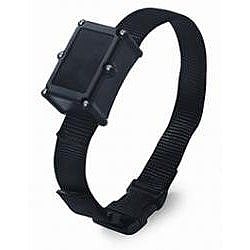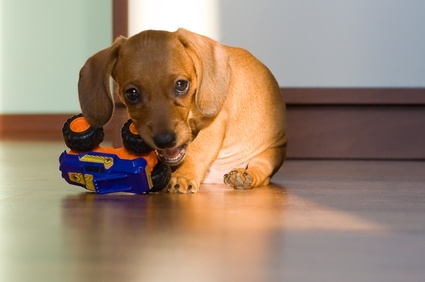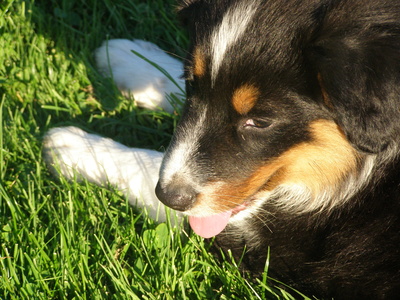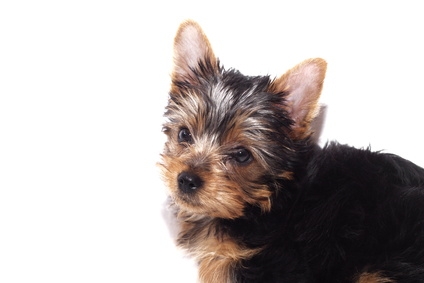
Tips for Training a Puppy. You've just brought home a cute ball of fur, so now what? It's no secret that owners who train their puppies from day one produce happier, healthier and better behaved dogs. If you're a bit clueless where to begin, don't panic. Several resources are at your disposal.
The first step in training any puppy is to establish the house rules through housetraining. The Humane Society of the United States recommends that you begin housetraining by taking the puppy outside at least every two hours when you first get him. It's also key to take your dog outside for a walk as soon as he wakes up, eats or drinks. Without having immediate access to an outdoor potty, he will have no choice but to eliminate indoors. A puppy's bladder is small and needs to be emptied much more frequently than an adult dog's bladder, which is why it's not advised to wait longer than two hours at a time to walk your new dog.
Many dog trainers tell desperate owners that no dog will obey commands unless that dog sees the person giving the command in a dominant position. Dominance, however, does not translate to physical punishment or verbal abuse. There are gentle ways to teach your puppy who's boss. The first is by setting your puppy on a feeding schedule. Rather than leaving a bowl of food down for the puppy to munch on all day, make sure you are present anytime your puppy is fed. In the earliest stages of your relationship, hand feed your puppy. If the puppy gets aggressive while eating, take the food away and try again five minutes later. This teaches your dog that you control her food. Another way to establish your leadership is by turning your back on and ignoring your puppy anytime she performs an undesired behavior, such as biting, jumping or barking. In some cases, you should put your puppy in a quiet room alone (but be sure to give her a chew toy so she doesn't get bored and destructive). After ten minutes, she can rejoin you. This teaches a puppy which behaviors are not allowed. Socializing your puppy by taking her to a dog park or on a play date with a friend's dog is also crucial in helping your puppy learn social hierarchy and appreciate that you are her master.
The Humane Society of the United States believes there is one universal truth to training a dog, no matter what his age. Dogs build behaviors around what is expected of them. Praising a dog teaches him what is expected. It is important to have patience and remember that accidents do and will happen. Constantly scolding your puppy runs the risk of making him grow into a timid and nervous canine. Any time your puppy does something that you want him to do, praise him by petting him, calling him a good boy and giving him a treat. For example, if you want to teach your puppy to sit on command, reward him for responding to the voice command "Sit!" with plenty of happy, positive praise along with a treat anytime he gets it right. This is true of any trick you might wish to teach your little ball of fur.
 How to find the Best Electronic Dog Training Collar
How to find the Best Electronic Dog Training C
How to find the Best Electronic Dog Training Collar
How to find the Best Electronic Dog Training C
 How To Contain And Train Dogs Using Electronic Dog Fence
Keeping and training dogs to stay within your vicinity and
How To Contain And Train Dogs Using Electronic Dog Fence
Keeping and training dogs to stay within your vicinity and
 Grass for Puppy Potty Training
Grass for Puppy Potty Training
Grass f
Grass for Puppy Potty Training
Grass for Puppy Potty Training
Grass f
 Indoor Grass & Sod for Potty Training Puppies
Indoor Grass & Sod for Potty Training Pupp
Indoor Grass & Sod for Potty Training Puppies
Indoor Grass & Sod for Potty Training Pupp
 How to Potty Train a Yorkie on Puppy Pads
How to Potty Train a Yorkie on Puppy Pads
How to Potty Train a Yorkie on Puppy Pads
How to Potty Train a Yorkie on Puppy Pads
Copyright © 2005-2016 Pet Information All Rights Reserved
Contact us: www162date@outlook.com